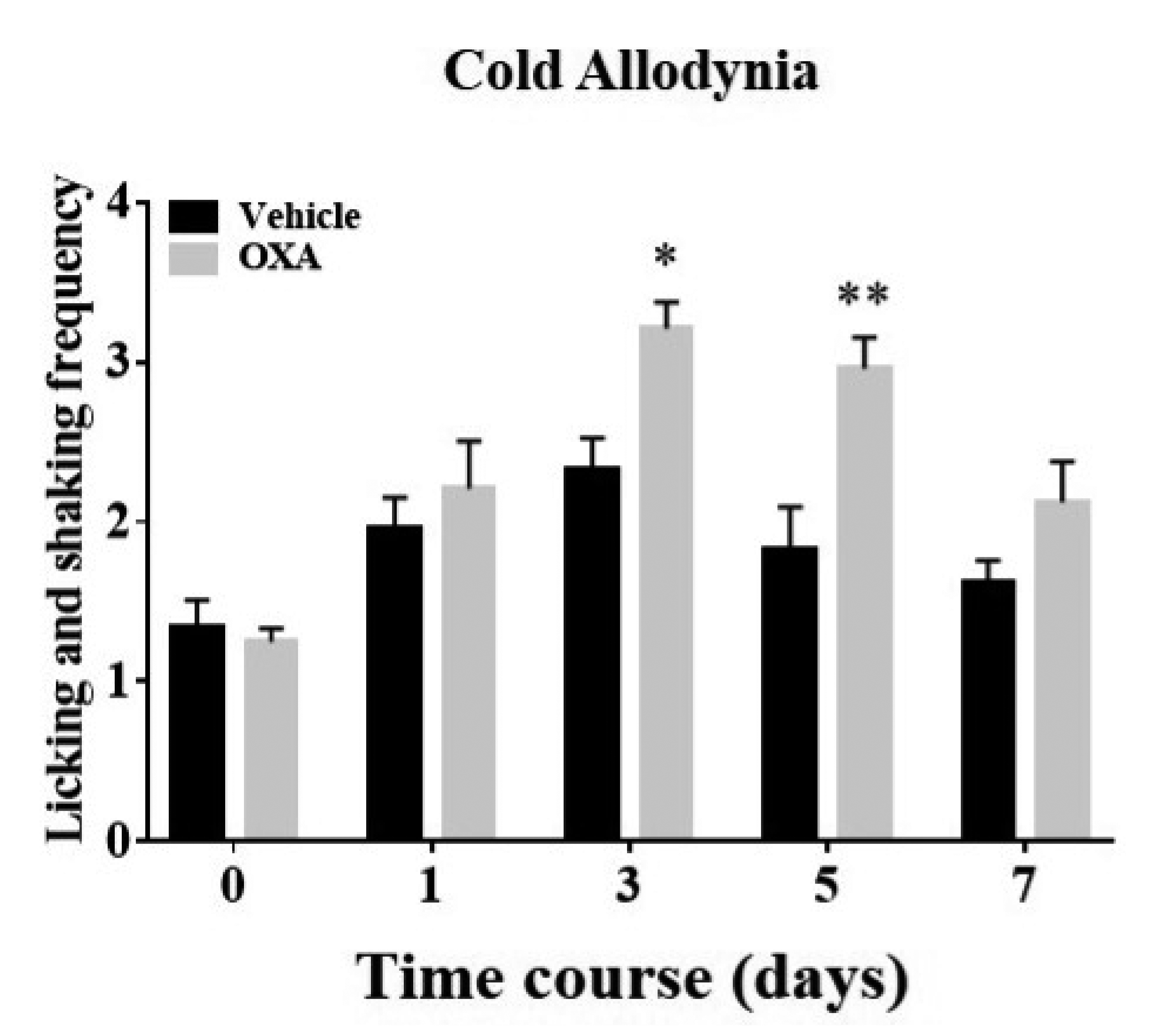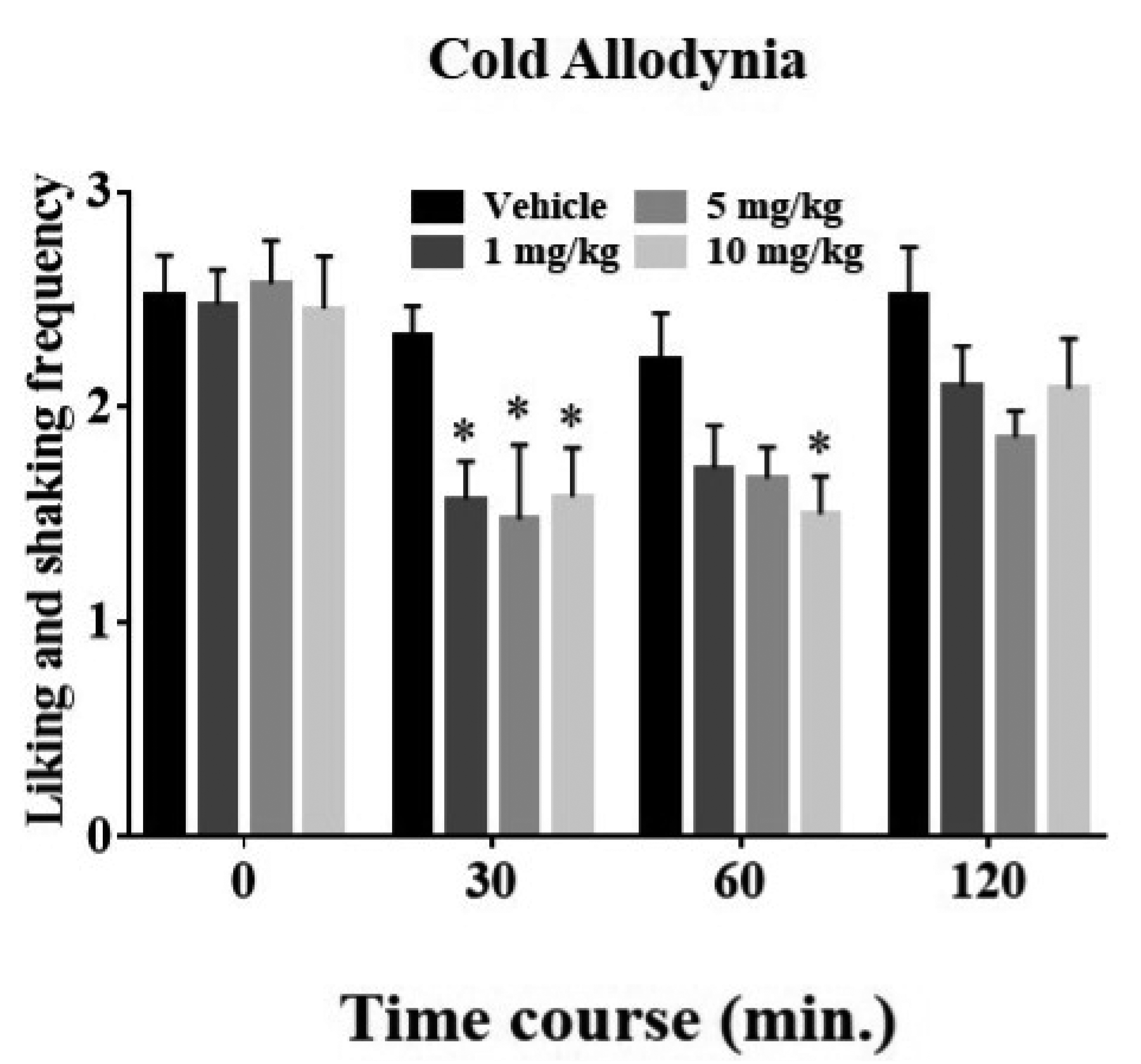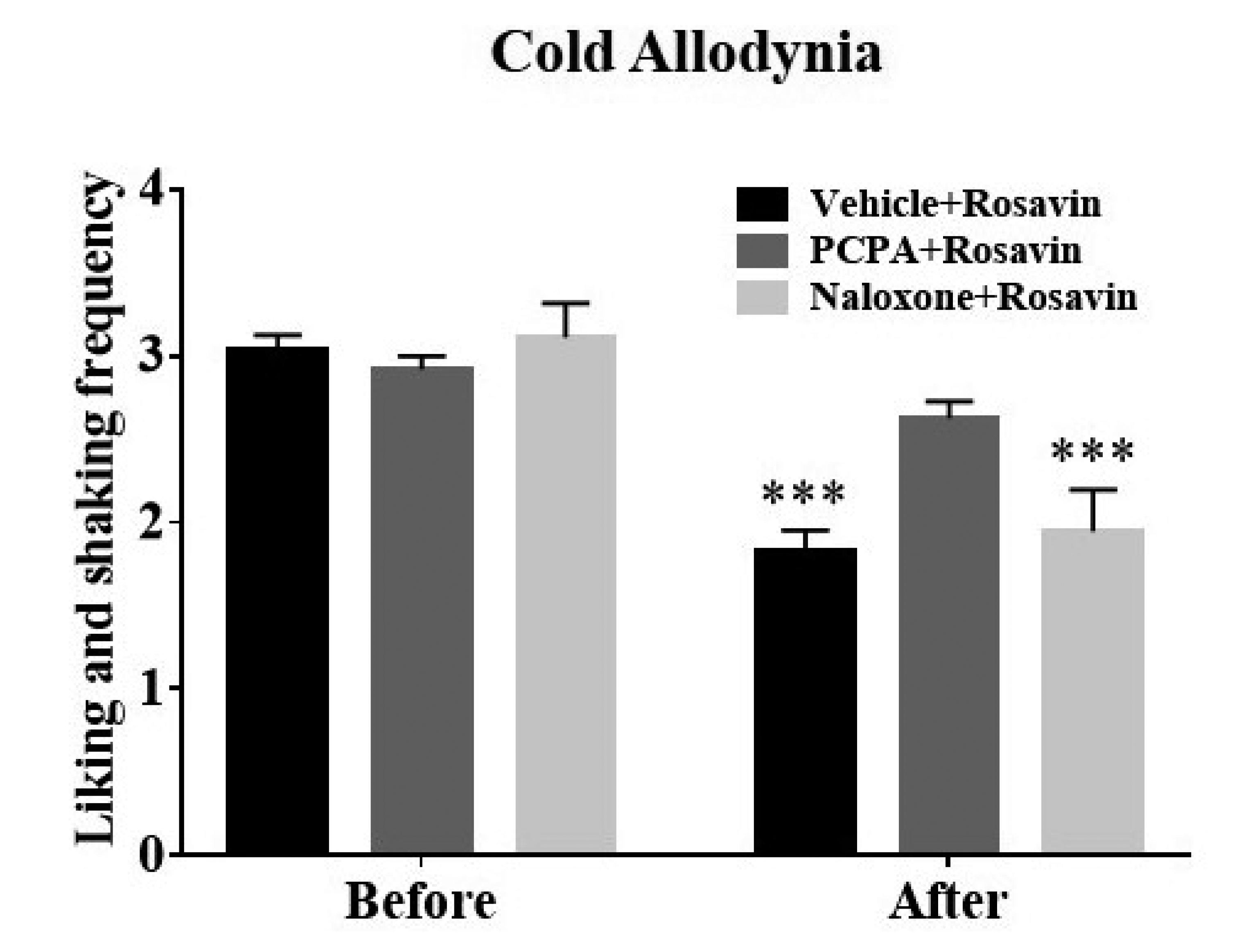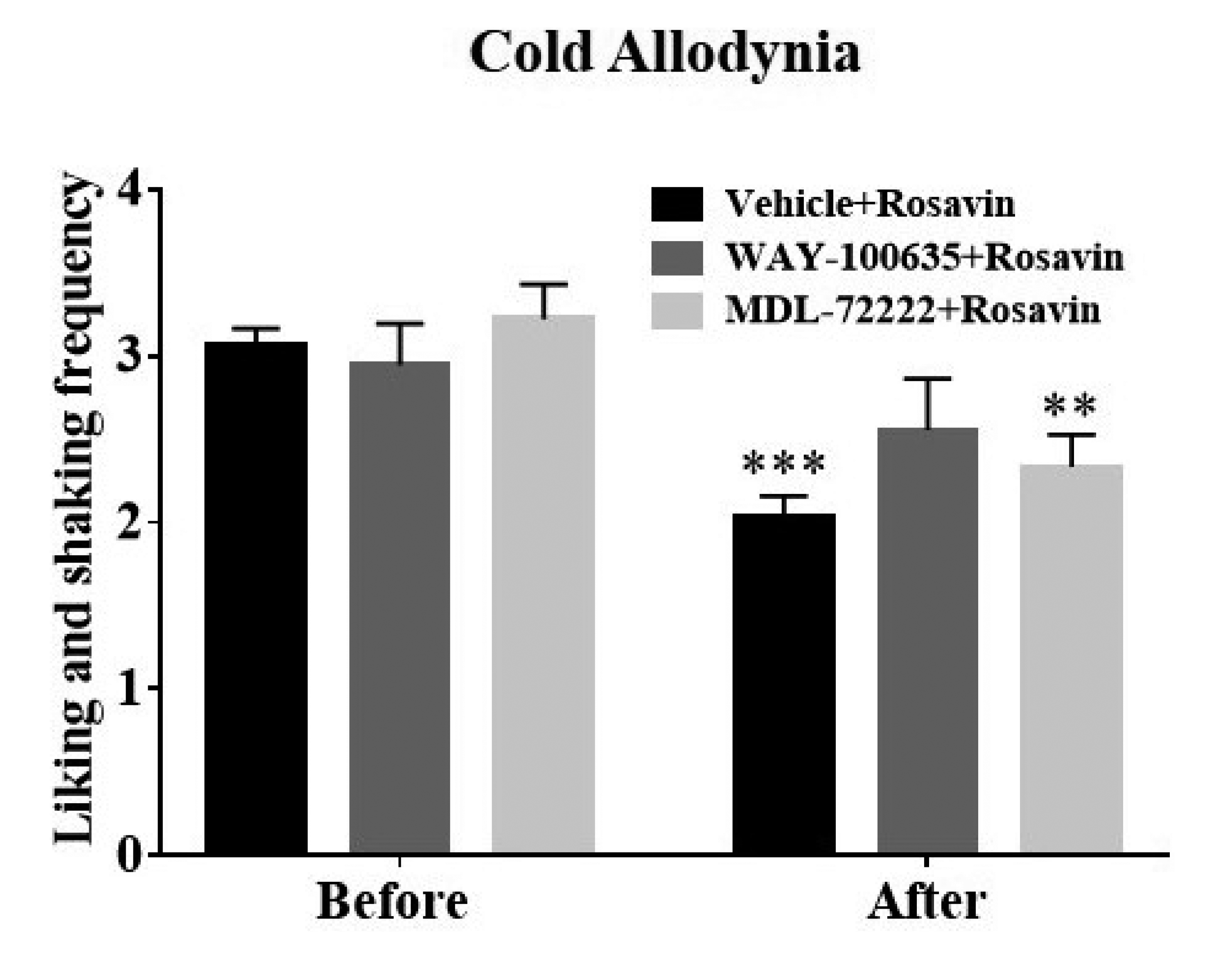1. Zajączkowska R, Kocot-Kępska M, Leppert W, Wrzosek A, Mika J, Wordliczek J. 2019; Mechanisms of chemotherapy-induced peripheral neuropathy. Int J Mol Sci. 20:1451. DOI:
10.3390/ijms20061451. PMID:
30909387. PMCID:
PMC6471666.

2. Boyette-Davis JA, Hou S, Abdi S, Dougherty PM. 2018; An updated understanding of the mechanisms involved in chemotherapy-induced neuropathy. Pain Manag. 8:363–375. DOI:
10.2217/pmt-2018-0020. PMID:
30212277. PMCID:
PMC6462837.

4. Kerckhove N, Collin A, Condé S, Chaleteix C, Pezet D, Balayssac D. 2017; Long-term effects, pathophysiological mechanisms, and risk factors of chemotherapy-induced peripheral neuropathies: a comprehensive literature review. Front Pharmacol. 8:86. DOI:
10.3389/fphar.2017.00086. PMID:
28286483. PMCID:
PMC5323411.

5. Choi HM, Jung Y, Park J, Kim HL, Youn DH, Kang J, Jeong MY, Lee JH, Yang WM, Lee SG, Ahn KS, Um JY. 2016; Cinnamomi cortex (Cinnamomum verum) suppresses testosterone-induced benign prostatic hyperplasia by regulating 5α-reductase. Sci Rep. 6:31906. DOI:
10.1038/srep31906. PMID:
27549514. PMCID:
PMC4994048.

6. Hayashi K, Imanishi N, Kashiwayama Y, Kawano A, Terasawa K, Shimada Y, Ochiai H. 2007; Inhibitory effect of cinnamaldehyde, derived from Cinnamomi cortex, on the growth of influenza A/PR/8 virus in vitro and in vivo. Antiviral Res. 74:1–8. DOI:
10.1016/j.antiviral.2007.01.003. PMID:
17303260.

7. Chae HK, Kim W, Kim SK. 2019; Phytochemicals of Cinnamomi Cortex: cinnamic acid, but not cinnamaldehyde, attenuates oxaliplatin-induced cold and mechanical hypersensitivity in rats. Nutrients. 11:432. DOI:
10.3390/nu11020432. PMID:
30791474. PMCID:
PMC6412559.

8. Kim C, Lee JH, Kim W, Li D, Kim Y, Lee K, Kim SK. 2016; The suppressive effects of Cinnamomi Cortex and its phytocompound coumarin on oxaliplatin-induced neuropathic cold allodynia in rats. Molecules. 21:1253. DOI:
10.3390/molecules21091253. PMID:
27657030. PMCID:
PMC6274362.

9. Perfumi M, Mattioli L. 2007; Adaptogenic and central nervous system effects of single doses of 3% rosavin and 1% salidroside Rhodiola rosea L. extract in mice. Phytother Res. 21:37–43. DOI:
10.1002/ptr.2013. PMID:
17072830.
10. Chiang HM, Chen HC, Wu CS, Wu PY, Wen KC. 2015; Rhodiola plants: chemistry and biological activity. J Food Drug Anal. 23:359–369. DOI:
10.1016/j.jfda.2015.04.007. PMID:
28911692.

11. Park JS, Choi J, Kwon JY, Jung KA, Yang CW, Park SH, Cho ML. 2018; A probiotic complex, rosavin, zinc, and prebiotics ameliorate intestinal inflammation in an acute colitis mouse model. J Transl Med. 16:37. DOI:
10.1186/s12967-018-1410-1. PMID:
29466999. PMCID:
PMC5822606.

12. Panossian AG, Efferth T, Shikov AN, Pozharitskaya ON, Kuchta K, Mukherjee PK, Banerjee S, Heinrich M, Wu W, Guo DA, Wagner H. 2021; Evolution of the adaptogenic concept from traditional use to medical systems: pharmacology of stress- and aging-related diseases. Med Res Rev. 41:630–703. DOI:
10.1002/med.21743. PMID:
33103257. PMCID:
PMC7756641.

13. Stancheva SL, Mosharrof A. 1987; Effect of the extract of Rhodiola rosea L. on the content of the brain biogenic monamines. Med Physiol. 40:85–87.
14. Chen QG, Zeng YS, Qu ZQ, Tang JY, Qin YJ, Chung P, Wong R, Hägg U. 2009; The effects of Rhodiola rosea extract on 5-HT level, cell proliferation and quantity of neurons at cerebral hippocampus of depressive rats. Phytomedicine. 16:830–838. DOI:
10.1016/j.phymed.2009.03.011. PMID:
19403286.

15. Lishmanov IuB, Trifonova ZhV, Tsibin AN, Maslova LV, Dement'eva LA. 1987; Plasma beta-endorphin and stress hormones in stress and adaptation. Biull Eksp Biol Med. 103:422–424. Russian. DOI:
10.1007/BF00842472. PMID:
2952180.
16. Montiel-Ruiz RM, González-Trujano ME, Déciga-Campos M. 2013; Synergistic interactions between the antinociceptive effect of Rhodiola rosea extract and B vitamins in the mouse formalin test. Phytomedicine. 20:1280–1287. DOI:
10.1016/j.phymed.2013.07.006. PMID:
23920277.

18. Nguyen LM, Rhondali W, De la Cruz M, Hui D, Palmer L, Kang DH, Parsons HA, Bruera E. 2013; Frequency and predictors of patient deviation from prescribed opioids and barriers to opioid pain management in patients with advanced cancer. J Pain Symptom Manage. 45:506–516. DOI:
10.1016/j.jpainsymman.2012.02.023. PMID:
22940562. PMCID:
PMC3856203.

20. Li D, Lee JH, Choi CW, Kim J, Kim SK, Kim W. 2019; The analgesic effect of venlafaxine and its mechanism on oxaliplatin-induced neuropathic pain in mice. Int J Mol Sci. 20:1652. DOI:
10.3390/ijms20071652. PMID:
30987090. PMCID:
PMC6479607.

21. Li D, Lee Y, Kim W, Lee K, Bae H, Kim SK. 2015; Analgesic effects of Bee Venom derived phospholipase A
2 in a mouse model of oxaliplatin-induced neuropathic pain. Toxins (Basel). 7:2422–2434. DOI:
10.3390/toxins7072422. PMID:
26131771. PMCID:
PMC4516921.
22. Li D, Chung G, Kim SK. 2020; The involvement of central noradrenergic pathway in the analgesic effect of bee venom acupuncture on vincristine-induced peripheral neuropathy in rats. Toxins (Basel). 12:775. DOI:
10.3390/toxins12120775. PMID:
33291335. PMCID:
PMC7762247.

23. Nakagawa T, Minami M, Katsumata S, Ienaga Y, Satoh M. 1995; Suppression of naloxone-precipitated withdrawal jumps in morphine-dependent mice by stimulation of prostaglandin EP
3 receptor. Br J Pharmacol. 116:2661–2666. DOI:
10.1111/j.1476-5381.1995.tb17223.x. PMID:
8590986. PMCID:
PMC1909143.
24. Choi S, Chae HK, Heo H, Hahm DH, Kim W, Kim SK. 2019; Analgesic effect of melittin on oxaliplatin-induced peripheral neuropathy in rats. Toxins (Basel). 11:396. DOI:
10.3390/toxins11070396. PMID:
31288453. PMCID:
PMC6669583.

25. Sung SH, Kim JW, Han JE, Shin BC, Park JK, Lee G. 2021; Animal venom for medical usage in pharmacopuncture in Korean medicine: current status and clinical implication. Toxins (Basel). 13:105. DOI:
10.3390/toxins13020105. PMID:
33535603. PMCID:
PMC7912904.

26. Kwon JY, Lee SH, Jhun J, Choi J, Jung K, Cho KH, Kim SJ, Yang CW, Park SH, Cho ML. 2018; The combination of probiotic complex, rosavin, and zinc improves pain and cartilage destruction in an osteoarthritis rat model. J Med Food. 21:364–371. DOI:
10.1089/jmf.2017.4034. PMID:
29346012.

27. Déciga-Campos M, González-Trujano ME, Ventura-Martínez R, Montiel-Ruiz RM, Ángeles-López GE, Brindis F. 2016; Antihyperalgesic activity of Rhodiola rosea in a diabetic rat model. Drug Dev Res. 77:29–36. DOI:
10.1002/ddr.21289. PMID:
26763184.
29. Otoshi CK, Walwyn WM, Tillakaratne NJ, Zhong H, Roy RR, Edgerton VR. 2009; Distribution and localization of 5-HT
1A receptors in the rat lumbar spinal cord after transection and deafferentation. J Neurotrauma. 26:575–584. DOI:
10.1089/neu.2008.0640. PMID:
19260781. PMCID:
PMC2828940.
30. Oyama T, Ueda M, Kuraishi Y, Akaike A, Satoh M. 1996; Dual effect of serotonin on formalin-induced nociception in the rat spinal cord. Neurosci Res. 25:129–135. DOI:
10.1016/0168-0102(96)01034-6. PMID:
8829149.

31. Lee JH, Min D, Lee D, Kim W. 2021;
Zingiber officinale roscoe rhizomes attenuate oxaliplatin-induced neuropathic pain in mice. Molecules. 26:548. DOI:
10.3390/molecules26030548. PMID:
33494465. PMCID:
PMC7866215.
32. Liu Z, Li X, Simoneau AR, Jafari M, Zi X. 2012; Rhodiola rosea extracts and salidroside decrease the growth of bladder cancer cell lines via inhibition of the mTOR pathway and induction of autophagy. Mol Carcinog. 51:257–267. DOI:
10.1002/mc.20780. PMID:
21520297. PMCID:
PMC3144985.

33. Udintsev SN, Shakhov VP. 1989; Decrease in the growth rate of Ehrlich's tumor and Pliss' lymphosarcoma with partial hepatectomy. Vopr Onkol. 35:1072–1075. Russian.








 PDF
PDF Citation
Citation Print
Print


 XML Download
XML Download